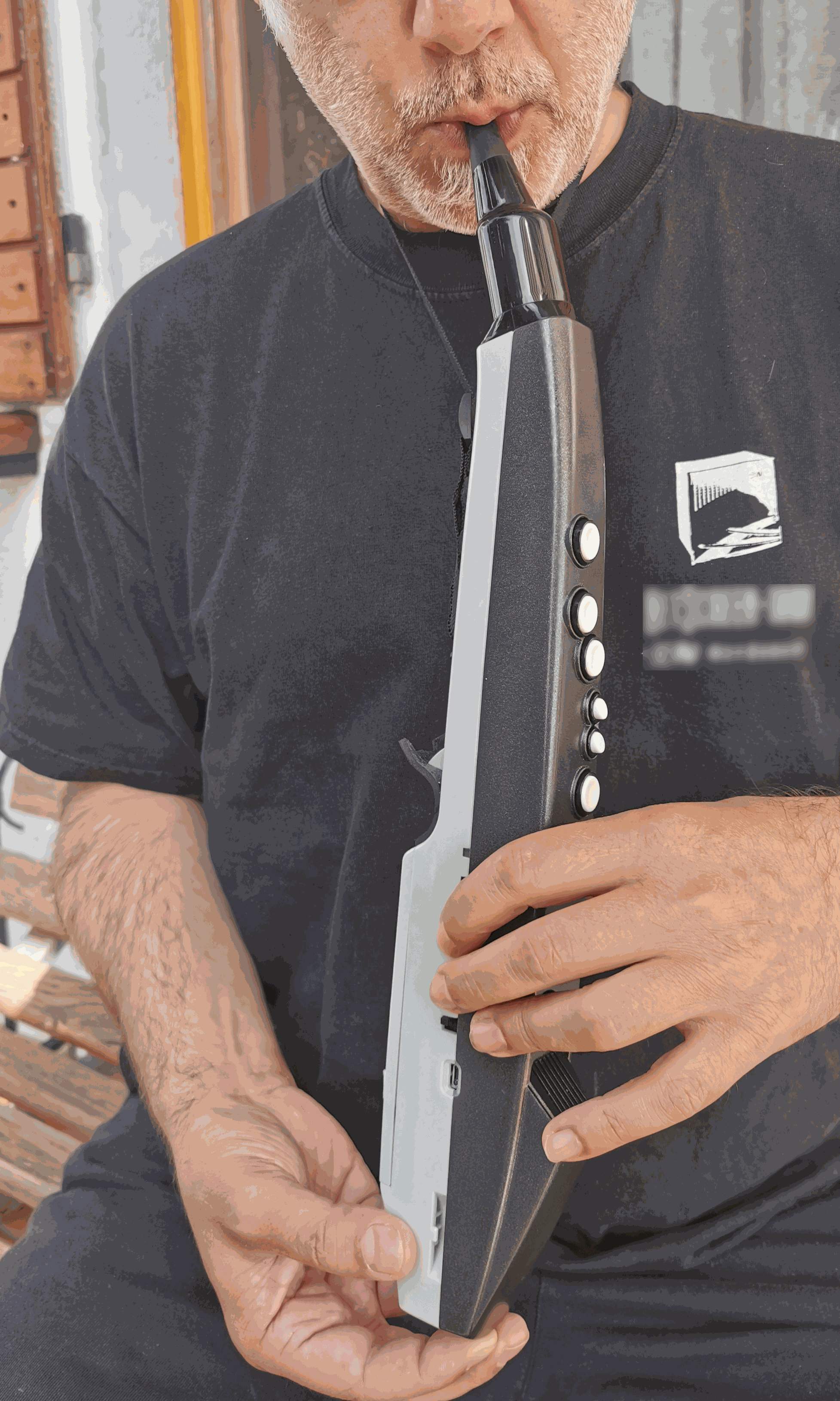Aerophone Mini - Playing Without Breath
Hi guys,
a short post just to share with you a small trick I discovered some time ago.
Every time we switch the Mini on, the breath sensor (the electronic component responsible for measuring the air quantity we breath into the instrument) gets an automatic calibration based on the current pressure. This means that, whatever the air pressure is at startup, that becomes the “zero” value, a reference for all future pressure modifications.
 If we apply a negative pressure at startup by explicitly breathing in from the mouthpiece (as shown in the picture), once we release the mouthpiece the normal atmospheric pressure will be measured as positive and the Mini will start emitting notes continuously without us even touching the mouthpiece.
If we apply a negative pressure at startup by explicitly breathing in from the mouthpiece (as shown in the picture), once we release the mouthpiece the normal atmospheric pressure will be measured as positive and the Mini will start emitting notes continuously without us even touching the mouthpiece.
So, here’s how it goes:
Plug the water drain hole at the bottom of the instrument with a finger;
Start sucking from the mouthpiece (different strengths might have different results);
Switch the Aerophone Mini on;
Wait 2/3 seconds then release the mouthpiece and the water drain hole.
The Aerophone Mini should start playing notes. You can use your fingers to change pitches.
You can adjust any parameter you wish (volume, preset, reverb, etc.) but you might have to suck in briefly again to restart the sound.
To reset and re-calibrate the instrument, it should be enough to turn the Mini off, wait a couple of seconds and then switch it back on. I noticed that sometimes you have to repeat the switch-off/switch-on routine to return to normal conditions.
Finally, let’s go to the Why should we use such a trick. It is often useful to separate the workouts of different aspects of playing, namely: breath, tongue and fingers. With this technique, we get rid of the breath/tongue part and can focus on the fingers only. In particular, it is useful that the emitted sound is continuous, thus giving us a perfect legato: when playing passages that are particularly difficult for your fingers you can hear very well all eventual glitches that are produced by an imperfect finger movement, and practice the passage until it works well.
I suggest starting with the usual materials, scales and arpeggios, and see how it goes. Then you can concentrate on specific passages from other pieces you might be studying at the moment.
Happy tooting!